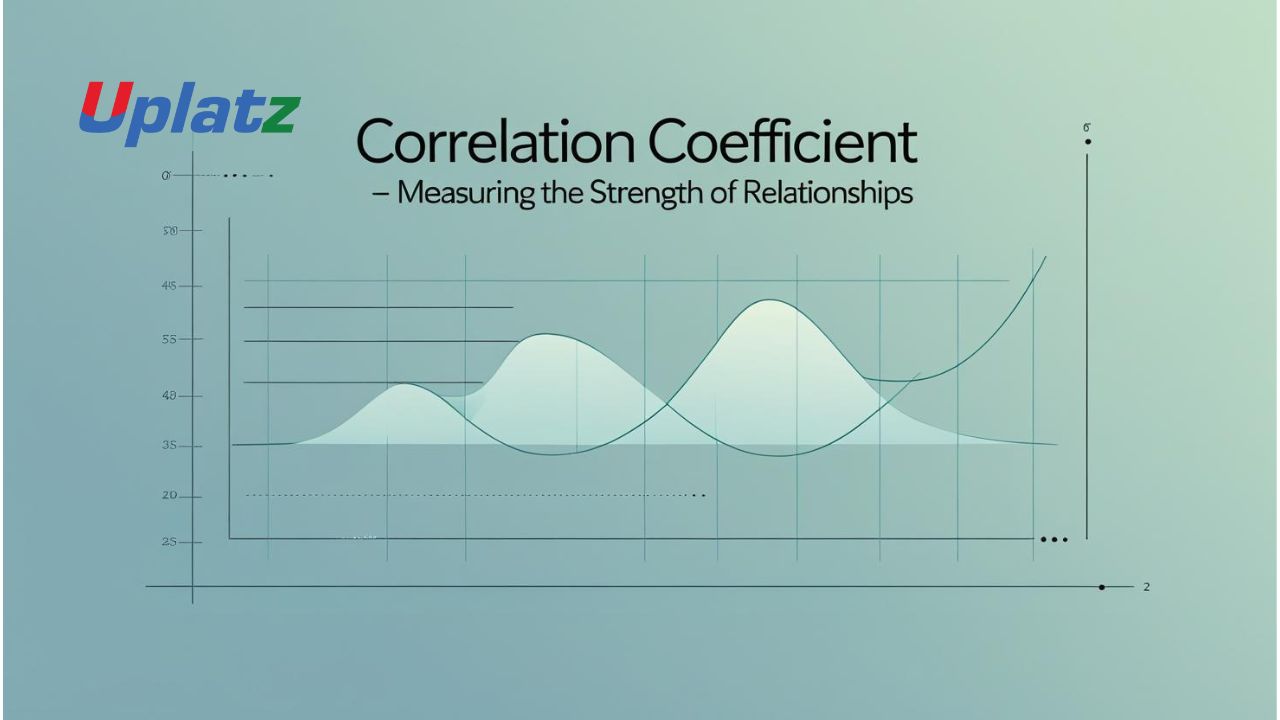 🔹 Short Description:
🔹 Short Description:
The correlation coefficient quantifies the strength and direction of the relationship between two variables. It ranges from -1 to 1 and is vital in statistics, economics, science, and data analysis.
🔹 Description (Plain Text):
The correlation coefficient, often denoted by r, is a statistical measure that describes the degree to which two variables move in relation to each other. It provides insights into whether an increase in one variable tends to be associated with an increase or decrease in another.
Formula (Pearson’s r):
r = Σ[(xᵢ − x̄)(yᵢ − ȳ)] / √[Σ(xᵢ − x̄)² * Σ(yᵢ − ȳ)²]
Where:
- xᵢ and yᵢ = individual data points
- x̄ and ȳ = means of x and y
- Σ = summation notation
Range of r values:
- +1: Perfect positive correlation
- 0: No correlation
- –1: Perfect negative correlation
Example:
If study time and exam scores have an r = 0.9, it means as study time increases, exam scores also increase — and the relationship is strong and positive.
Why the Correlation Coefficient Matters:
This coefficient allows analysts and researchers to quantify relationships between variables, making it easier to test theories, forecast trends, or spot dependencies. While a high absolute value indicates a strong relationship, it’s important to remember that correlation does not imply causation.
Real-World Applications:
- Finance: Correlating interest rates with stock prices
- Marketing: Assessing relationships between ad spend and sales
- Healthcare: Studying correlations between risk factors and disease rates
- Social Science: Linking education levels with income
- Machine Learning: Identifying correlated features before modeling
Key Insights:
- Positive r: both variables increase together
- Negative r: one increases while the other decreases
- r near 0: little or no linear relationship
- Often visualized with a scatter plot to show data trends
- Helps determine if linear regression is appropriate
Limitations:
- Correlation only captures linear relationships; non-linear trends may go undetected
- A strong correlation doesn’t imply a cause-effect relationship
- Outliers can distort the correlation value significantly
- Pearson’s r assumes normally distributed variables and consistent variance
The correlation coefficient is a cornerstone of data interpretation, helping decision-makers, analysts, and researchers draw meaningful insights from data pairs and drive evidence-based conclusions.
🔹 Meta Title:
Correlation Coefficient – Formula, Interpretation, and Real-World Use
🔹 Meta Description:
Explore the correlation coefficient and its use in understanding relationships between variables. Learn how to interpret values of r, compute Pearson’s formula, and apply this metric in finance, health, marketing, and data science to uncover trends and support decisions.
